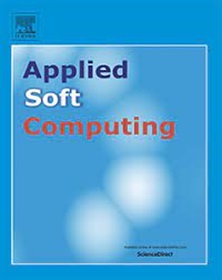基于复杂关系和细粒度属性的跨语言实体对齐
IF 6.6
1区 计算机科学
Q1 COMPUTER SCIENCE, ARTIFICIAL INTELLIGENCE
引用次数: 0
摘要
知识图实体对齐旨在匹配不同图中的等效实体,这是实现跨语言知识融合的关键任务。主流方法使用基于向量距离的表示学习来进行实体对齐,但难以处理复杂的关系语义和未充分利用对对齐至关重要的细粒度属性信息。为了克服上述问题,本文提出了一种基于复杂关系和细粒度属性的跨语言实体对齐模型(CEARA)。该模型通过区分关系语义对实体嵌入的不同影响,提取详细的属性信息,有效地处理关系语义,提高对齐精度。此外,它集成了实体名称字符串的相似性,以补充缺失或嘈杂的关系和属性数据,进一步提高了对齐可靠性。为了减轻对齐冲突,该模型采用了全局对齐策略。在三个跨语言数据集上的实验结果表明,CEARA不仅优于代表性的基线模型,而且在所有数据集上的得分都超过了Hits@1 95%,突出了其跨语言比对的有效性和鲁棒性。本文对跨语言知识的发现和应用有一定的促进作用。本文章由计算机程序翻译,如有差异,请以英文原文为准。
Cross-lingual entity alignment based on complex relationships and fine-grained attributes
Knowledge graph entity alignment seeks to match equivalent entities across different graphs, a critical task for enabling cross-lingual knowledge fusion. Mainstream methods use representation learning for entity alignment based on vector distances, but struggle with complex relational semantics and underutilize fine-grained attribute information crucial for alignment. To overcome the above problems, this paper proposes a cross-lingual entity alignment model based on complex relationships and fine-grained attributes (CEARA). The proposed model effectively handles relational semantics by distinguishing their varying impacts on entity embeddings and extracting detailed attribute information to enhance alignment accuracy. Additionally, it integrates entity name string similarity to complement missing or noisy relational and attribute data, further improving alignment reliability. To mitigate alignment conflicts, the model employs a global alignment strategy. Experimental results on three cross-lingual datasets demonstrate that CEARA not only outperforms representative baseline models but also achieves Hits@1 scores exceeding 95% across all datasets, highlighting its effectiveness and robustness for cross-lingual alignment. This paper contributes to the advancement of cross-lingual knowledge discovery and application.
求助全文
通过发布文献求助,成功后即可免费获取论文全文。
去求助
来源期刊

Applied Soft Computing
工程技术-计算机:跨学科应用
CiteScore
15.80
自引率
6.90%
发文量
874
审稿时长
10.9 months
期刊介绍:
Applied Soft Computing is an international journal promoting an integrated view of soft computing to solve real life problems.The focus is to publish the highest quality research in application and convergence of the areas of Fuzzy Logic, Neural Networks, Evolutionary Computing, Rough Sets and other similar techniques to address real world complexities.
Applied Soft Computing is a rolling publication: articles are published as soon as the editor-in-chief has accepted them. Therefore, the web site will continuously be updated with new articles and the publication time will be short.
 求助内容:
求助内容: 应助结果提醒方式:
应助结果提醒方式:


